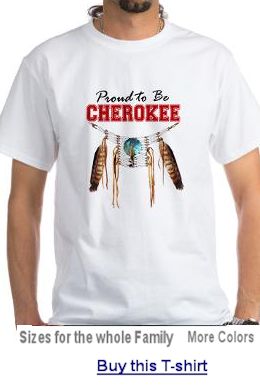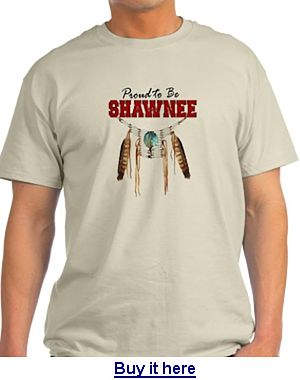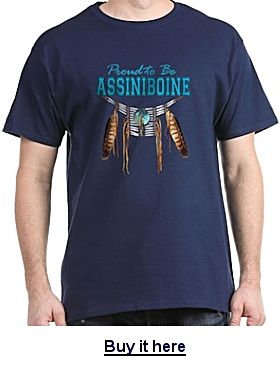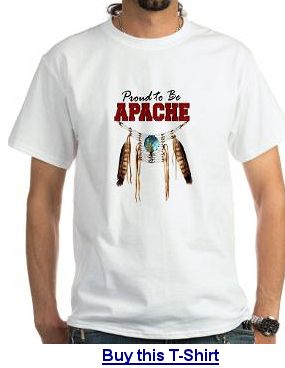The Grand Portage Band of Lake Superior Chippewa Indians was considered to be part of the Lake Superior Band of Chippewa, but was not a party to the treaties that group signed. Since 1934, it has been one of the six bands making up the federally recognized Minnesota Chippewa Tribe, which wrote a constitution and initiated its new government in 1936.
US Tribes E to G
Linked tribal names go to their profile index page which will contain more links to sections of our site where you can find articles about that tribe and related tribes.
Inclusion on this site does NOT mean an endorsement has been made for recognition of any particular tribe. All entities claiming to be US indian tribes that we are aware of have been included for completeness. Where known, we have indicated official tribal status with our Key Chart, based on information released by the BIA as of May 2016. In many cases we have not verified the validity of the claim of tribal status, and leave it to your own common sense or further research to validate tribal claims.Alternate names in parenthesis are either older names that were once used to identify that tribe, or they are misspellings.Links to tribal profile pages are at the bottom of the page.
us tribes starting with E
Elwha:
Lower Elwha Tribal Community of the Lower Elwha Reservation (Washington State) (F)
Eenou (Eeyou) Elko Colony – See Te-Moak Tribe of Western Shoshone Indians of Nevada Esselen (Ecclemachs,Etchemin, Etchimin, Eslen, Eslenes, Excelen, and Escelen) (U) Etnemitane Euchee Eudeve (Eudebe, Endeve)
us tribes starting with F
Fernandeño/Tativiam:
Fernandeño/Tataviam Tribe (California)
Flandreau Santee Sioux — See Sioux Indians
Fond du Lac Tribe – See Minnesota Chippewa Tribe
Fort Peck Assiniboine and Sioux Tribes – See Assiniboine and Sioux Tribes of the Fort Peck Indian Reservation
Fort Yuma-Quechan Tribe — See Quechan (Yuma) Indians
Flathead — See Confederated Salish and Kootenai Tribes
Fox — See Sac & Fox Nation, Sac & Fox Nation of Missouri in Kansas and Nebraska, and Sac & Fox Tribe of the Mississippi in Iowa
French Cree
us tribes starting with G
Gabrielino (Gabrieleño, Kizh, Kij,Playsanos, Tobikhars, Tumangamalum) (California) – See see Tongva
Goshute: (Gosiute)
Confederated Tribes of the Goshute Reservation (Nevada and Utah) (F)
Skull Valley Band of Goshute Indians of Utah(F)
Grand Ronde -See Confederated Tribes of the Grand Ronde (F)
Gros Ventre: (Split from Arapaho tribe, Also known as Atsina) – See Fort Belknap Indian Community of the Fort Belknap Reservation of Montana
Grand Portage Band – See Minnesota Chippewa Tribe, Minnesota (F)
Gaigwu (or Kaigwu) – See Kiowa
Galice – See Tolowa
Garifuna (U)- Descendants of West African, Central African, Island Carib, and Arawak people. The British colonial administration used the term Black Carib and Garifuna to distinguish them from Yellow and Red Carib, the Amerindian population that did not intermarry with Africans. Today the Garifuna people live primarily in Central America, but there are scattered communities in major US cities such as Los Angeles, Miami, New York City, New Orleans, Houston, and Seattle.
Gashowu – Language of the Yokuts
Goltsan (Kolchan) – An Athabaskan language of the Na Dene language family. It is spoken in the Upper Kuskokwim River village of Nikolai, Alaska.
Guarijio (Guarihio, Guarijío) – A Uto-Aztecan language of the states of Chihuahua and Sonora in northwestern Mexico.
Gulf – See Caddo
[back to TOP]
The federally recognized Eastern Band of Cherokee Indians is the only federally recognized tribe in the state of North Carolina. The Eastern Cherokee are those Cherokee people who remained on their traditional homelands when most of the Cherokee were forcibly relocated to Oklahoma.
Eastern Shawnee Tribe of Oklahoma
22 ViewsThe Eastern Shawnee Tribe of Oklahoma are descended from the mixed Seneca-Shawnee band which left Lewistown, Ohio and came to the Indian Territory in 1832. Recognized as a separate tribe in 1867, they organized as the Eastern Shawnee Tribe of Oklahoma during the 1930s.
The Elem Indian Colony of Pomo Indians is the only Southeastern Pomo indian tribe that is a federally recognized tribal government. The Southeastern Pomo Tribes of Lake County, California were a united sovereign fishing and gathering nation that consisted of four main villages. Today, there are roughly 20 Pomo rancherias in northern California.
Elk Valley Rancheria
22 ViewsElk Valley Rancheria is a federal reservation of Tolowa Indians in Del Norte County, near Crescent City, on the Pacific Coast just south of the Oregon border. Some Yurok people are also enrolled in this ranceria. The Tolowa also live on the Smith River Rancheria.
Ewiiaapaayp Band of Kumeyaay Indians
22 ViewsThe Ewiiaapaayp Band of Kumeyaay Indians is a federally recognized Kumeyaay Indian tribe in California formerly known as the “Cuyapaipe Band of Mission Indians” or the “Cuyapaipe Community of Diegeuno Mission Indians of the Cuyapaipe Reservation.”
The Bureau of Indian Affairs bought a 15-acre tract near Graton to be the “village home” of the Marshall, Bodega, Tomales and Sebastopol Indians in 1920. The government consolidated these neighboring groups into the Graton Rancheria thus establishing them as federally recognized tribes of American Indians, known today as the Federated Indians of Graton Rancheria. They are Southern Pomo and Coast Miwok peoples.
The Flandreau Santee Sioux Tribe of South Dakota is a federally recognized tribe of Santee Dakota people. Their reservation is the Flandreau Indian Reservation. The tribe are members of the Mdewakantonwan people, one of the sub-tribes of the Isanti (Santee) Dakota originally from central Minnesota.
Forest County Potawatomi Community
22 ViewsThe Forest County Potawatomi Community belongs to an alliance known as the “Council of Three Fires” that was started long ago among three brothers who shared similar lands and backgrounds. Their decendants are of the Anishinabe (Ojibwe, Ojibwa, Ojibway) tribes and once lived mostly in the eastern part of North America.
Who is the Fort Belknap Indian Community of the Fort Belknap Reservation of Montana?
This federally recognized tribe is made up of members from two tribes: the Assiniboine and the Gros Ventre.
The Fort Bidwell Indian Community of the Fort Bidwell Reservation of California is a federally recognized tribe of Northern Paiute Indians. The Paiute members are descended from the Northern Paiute Kidütökadö Band (Gidu Ticutta – “Yellow-bellied marmot-Eaters,” also called “Northern California Paiute”).
The Fort Independence Indian Community of Paiute Indians of the Fort Independence Reservation is a federally recognized tribe of Paiute and Shoshone people in Inyo County, California.
The Fort McDermitt Paiute and Shoshone Tribe is a federally recognized tribe of Northern Paiute and Western Shoshone peoples, located in McDermitt, Nevada and Oregon.
Fort McDowell Yavapai Nation
22 ViewsThe Fort McDowell Yavapai Nation calls Central Arizona’s upper Sonoran Desert home. Located to the northeast of Phoenix within Maricopa County, Arizona, the 40-square mile reservation is a small part of the ancestral territory of the once nomadic Yavapai people, who hunted and gathered food in a vast area of Arizona’s desert lowlands and mountainous Mogollon Rim country.
When the Spanish arrived in the late 1500s, the Mojaves were the largest concentration of people in the Southwest. The land of the Mojave, the most northern of the Yuman tribes, stretched from Black Canyon to the Picacho Mountains below today’s Parker Dam, straddling the Colorado River. Today, this tribe is known as the Fort Mojave Indian Tribe of Arizona, California, and Nevada.
Fort Sill Apache Tribe of Oklahoma
22 ViewsThe Fort Sill Apache Tribe of Oklahoma is made up of the descendants of the Chiricahua and Warm Springs Apache people that lived in Southern New Mexico until 1886, when they were forcibly removed and held by the U.S. Government as prisoners in Florida for 28 years. The Chiricahua were the last American Indian group to be relocated to Indian Territory.
The people of the Gila River Indian Community of the Gila River Indian Reservation are descencded from the Akimel O’odham, also known as Pima Indians, and the Pee Posh (Maricopa).
The federally recognized Grand Traverse Band of Ottawa and Chippewa Indians are the people of the Three Fires Confederacy, the Odawa (Ottawa) the Ojibwa (Chippewa) and Bodowadomi (Pottawatomi) people.
Greenville Rancheria
22 ViewsThe federally recognized Greenville Rancheria of Maidu Indians of California is currently located in the Indian Valley at the 3,500 foot level in the Sierra Nevada Mountains of Northern California.
The Grindstone Indian Rancheria of Wintun-Wailaki Indians is a federally recognized tribe and ranchería of Wintun and Wailaki Indians from northern California.
Guidiville Rancheria of California
24 ViewsThe federally recognized Guidiville Rancheria of California is a Pomo tribe located in Mendocino County, California. During the California Gold Rush, an influx of non-Indian settlers drove the Guidiville Pomos from their ancestral lands near Lake County, California into Mendocino County.
The Enterprise Rancheria of Maidu Indians of California originally lived in northeastern California’s mountain meadows and valleys. Today the Maidu’s descendants live on small reservations in California or in communities near these reservations. One of these is the Enterprise Rancheria.
Ely Shoshone Tribe of Nevada
22 ViewsThe Ely Shoshone Tribe of Nevada is located on the Southwest & Southeast sides of the City of Ely, Nevada in three seperate locations in White Pine County, Nevada. They are a band of the Western Shoshone indians.



